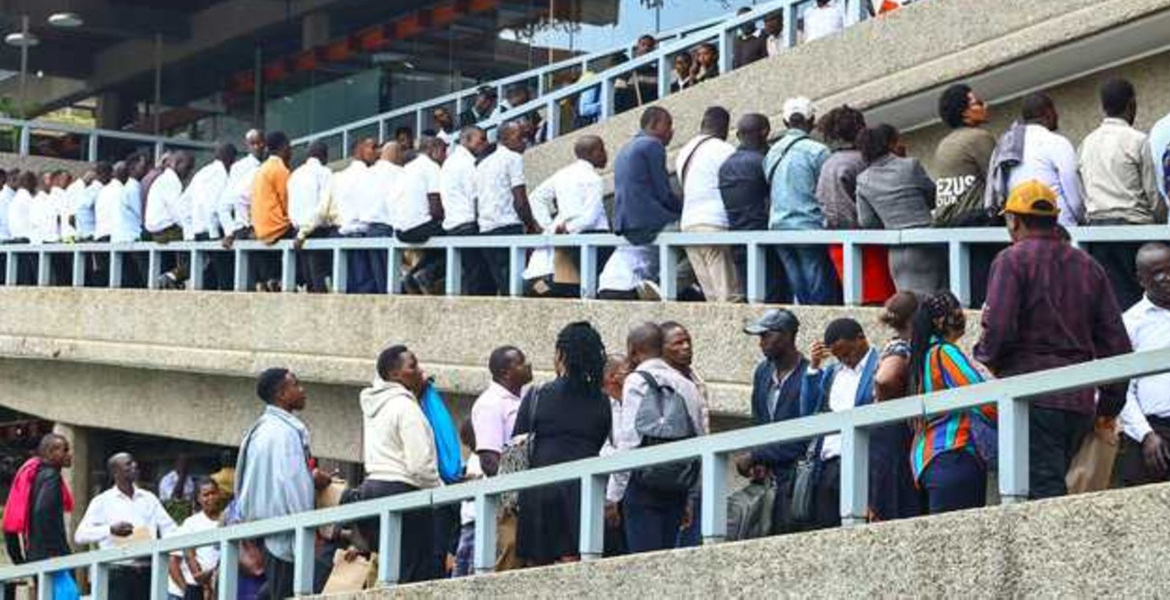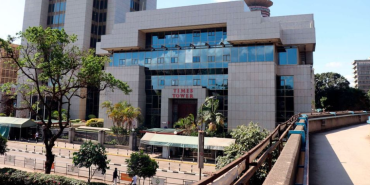Kenya’s Economic Growth Slows as Job Creation Drops to Lowest Level Since COVID-19

Kenya's economic growth is under strain, with recent data revealing a significant deceleration in job creation.
This raises concerns about the country's ability to address unemployment and foster sustainable economic opportunities. The latest figures from the Kenya National Bureau of Statistics (KNBS) indicate that the labour market experienced its slowest expansion since the disruptions caused by the COVID-19 pandemic. In 2024, the Kenyan economy generated 782,300 new jobs, a notable decrease from the 848,100 positions added in the previous year.
This slowdown coincides with an economic growth rate of 4.7 percent, the weakest since the pandemic, intensifying pressure on the government to implement effective strategies for job creation and economic stability. Kenya's economic struggles in the past year were compounded by several factors, including high borrowing costs, adverse weather conditions that hampered agricultural productivity, and socio-political unrest. The protests against the Finance Bill, 2024, had a particularly disruptive effect, forcing businesses to temporarily close, exacerbating cash flow problems, and contributing to job losses.
These converging challenges have collectively strained employment growth and disproportionately affected salaried workers, who have experienced a decline in real wages for the fifth consecutive year. A concerning trend in Kenya's job market is the increasing dominance of the informal sector, which accounted for approximately 90 percent of new employment opportunities in 2024. While the total workforce surpassed 20 million for the first time, the formal sector generated only 75,000 new jobs, a substantial drop from the 122,900 added in 2023.
This decline reflects corporate Kenya's limited capacity to provide sustainable, high-quality employment for the growing number of university and college graduates entering the labor force each year. Informal employment continued to rise, reaching 17.38 million workers in 2024, marking a 4.2 percent increase from the previous year. Despite this growth, informal jobs often lack the stability, benefits, and adequate wages associated with formal employment, leaving many workers vulnerable to economic shocks.
Meanwhile, self-employed and unpaid family workers within the formal economy experienced marginal increases, rising from 172,400 to 175,500. These trends underscore the persistent challenges within Kenya's structured labour market, where businesses grapple with financial difficulties that limit their ability to expand their workforces. The formal sector's contribution to employment remains sluggish, weighed down by factors such as taxation policies, high operational costs, and evolving consumer behavior.
Kenya's economic slowdown was further exacerbated by underwhelming performance across key industries, notably agriculture, a cornerstone of the economy. The agriculture, forestry, and fishing sectors grew by 4.6 percent in 2024, a noticeable decline from the 6.6 percent growth recorded the previous year. Inconsistent weather patterns played a pivotal role, with prolonged rains exceeding expectations while short rains underperformed, leading to uneven crop yields and fluctuations in food supply.
Other industries recorded mixed results. Manufacturing exhibited slight improvement, posting a growth rate of 2.8 percent compared to 2.2 percent in 2023. In contrast, the finance and insurance sectors experienced a significant slowdown, growing at 7.6 percent, substantially lower than the 10.1 percent expansion seen previously. These sectoral disparities reflect underlying economic uncertainties, with businesses reevaluating investment decisions and hiring strategies.
Throughout 2024, Kenyan businesses faced diminished consumer spending, cash flow constraints, and rising operational costs. Many companies responded by freezing salary increases or slowing down recruitment efforts, hesitant to expand their payrolls amid economic uncertainty. The Stanbic Bank Kenya Purchasing Managers’ Index (PMI) consistently reflected these difficulties, recording workforce numbers at their weakest levels since the start of the year.
Political turbulence further exacerbated these conditions. The Finance Bill protests in June disrupted business operations and led to temporary layoffs, particularly in casual labour roles. Across multiple sectors, firms struggled to maintain sales as turnover dropped in key months, including January, March, June, July, and September. Analysts noted that even the strengthening of the Kenyan shilling, reduced inflation, and increased marketing efforts were insufficient to stimulate consumer demand.
Economic strains also weighed heavily on households. Mandatory deductions to the National Social Security Fund (NSSF) and the Social Health Insurance Fund (SHIF) further reduced disposable income, reducing purchasing power and forcing consumers to scale back on non-essential expenditures. In response to these mounting challenges, the Federation of Kenya Employers (FKE) sought to introduce measures aimed at revitalizing business sustainability and easing the financial burden on workers. However, attempts to present these proposals during Labour Day celebrations were blocked, hindering broader dialogue on labour market reforms.
The FKE's proposals emphasizes key adjustments, such as pegging statutory deductions to basic pay, revising tax relief bands from Sh24,000 to Sh36,000, reducing the housing levy, and zero-rating essential food items for VAT. According to FKE’s executive director Jacqueline Mugo, these reforms could alleviate cost-of-living pressures and enhance the competitiveness of local businesses.
Moreover, the lobby group criticizes politicians for urging youth to focus on self-employment, calling the rhetoric misleading. Mugo says that it is unfortunate politicians urge self-employment while they are employed and earning a salary. For workers across both the private and public sectors, wage stagnation has remained a persistent issue.
The KNBS data confirms that real wages have failed to keep pace with inflation, leading to a five-year streak of declining purchasing power. In 2024, real average earnings per employee fell slightly by 0.3 percent to Sh665,400 annually, equivalent to Sh55,450 per month. While private-sector wages were higher at Sh689,300 per year (Sh57,441 per month), public sector earnings lagged behind at Sh614,300 (Sh51,191 per month).
The erosion of real wages reflects deeper economic challenges, including inflationary pressures, higher statutory deductions, and limited job mobility. For many Kenyans, maintaining their standard of living has become increasingly difficult as salary adjustments fail to counteract rising costs.








Add new comment